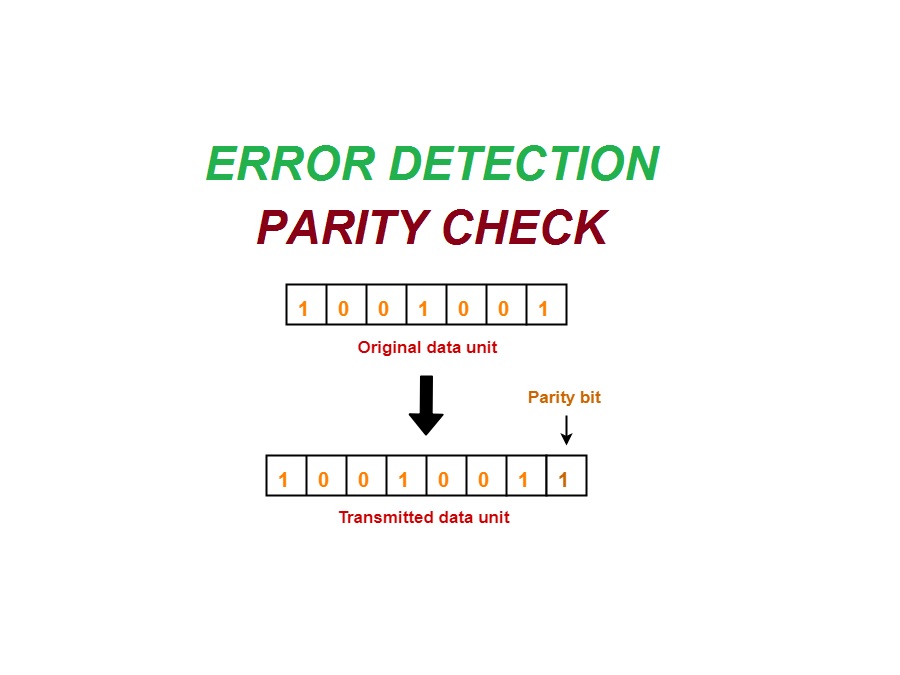The Error Detecting Codes Parity

Whenever bits are transferred using the computer network, there are high chances that they can get corrupted network issues or any other reason. Due to these corrupted bits, the data received by the receiver is not true or genuine and this is called an error. In this article we will discuss, What is even parity, odd parity, and more about errors.
How To Detect Error
Here various methods are used for checking if the error has occurred the data was transferred using the network. It would not consider the number of error bits or the type of error. To detect the error the sender will need to more bits with the data bits. Here the receiver will do the necessary checks using the additional bits which are no longer needed. If the receiver finds that the data is carrying no error then he would remove the unnecessary bits and pass the message to the next level.
Parity Bits
Here the parity would be inspected by putting here some extra bits which would be called the parity bit, to the data so the number of 1s will be even or odd it would depend upon the type of parity. This method can be used for single-bit error only. There are two ways of checking it. Even parity and odd parity. In the even parity, the sum of the bits in the message should be even. In the odd parity, the sum of the bits in the message should be odd.
Error Detection By Using Parity Method
Now we will consider the sender’s end. When the frame is created, the sender will see how many numbers of 1s are in it, he would add the parity bit value. Here they will consider even parity if the number of 1st is even the parity value will be 0, but if the number of 1s is odd the parity value would be 1. Now we will consider the case of odd parity if the number of 1s is odd the parity value would be 0, and if the number 1s is even the parity value would be 1.
Now we will consider the receiver’s end data of the frame. Here the receiver will check the number of 1s in the frame. If we consider the even parity the total count sum of 1s should be even then the frame is accepted or else the frame is rejected. Now let us consider the odd parity check the count of 1s is odd the frame is accepted or else it would be rejected.
Let Us Consider Some Format Here
The sender is sending the data 1001101 he is using the even parity method to do the audit., it should add parity bit as per this way 10011010. The receive will here be the deciding factor if the error has happened or not. The receiver will count the total number of 1s in the even format. The above-mentioned frame is collected then 3 things can happen there would be no error, there are high chances of detecting single-bit error or the system might fail to detect multiple errors. Here is an example 10011010 here there is no error. In the 2nd scenario 10011110, there is an error. Now let us consider the last scenario 10011010 here there are multiple failures.
CRC Method
In this method, the binary division of the data is being sent by the divisor who has already determined earlier only. Here they would be using polynomials so this method is also referred to as the polynomial method. Here they use the encoding and decoding method. Both the parties which are communicating agree upon the what is the size of the message and about the CRC divisor. When the receiver gets the data he tends to segregate the data unit according to the divisor.
Conclusion:
The above article will help the students to use the parity method to detect the error, they can use both even parity or the odd parity method. If there is an error in the system when the data is transferred that too can find out by using the above method but of the single-bit error’s only. We would write a separate article about the CRC method to explain it in detail.